
Reykjanes Peninsula: Iceland's Rugged Gem
Explore the Reykjanes Peninsula, Iceland's rugged gem with geothermal wonders, volcanic landscapes, and breathtaking coastal views just a short drive from Reykjavik.
The Reykjanes Peninsula is a stunning region in Iceland, known for its geothermal activity, volcanic landscapes, and breathtaking coastal views. Situated just a short drive from Reykjavik, the peninsula offers a perfect blend of natural beauty and fascinating geology, making it a must-visit destination for nature enthusiasts and adventure seekers. Visitors to the Reykjanes Peninsula can explore the famous Blue Lagoon, a geothermal spa with milky-blue waters that provide a unique and relaxing experience. The area is also home to dramatic volcanic craters, hot springs, and lava fields that create an otherworldly atmosphere. The rugged coastline features striking cliffs and scenic lighthouses, offering plenty of opportunities for photography and sightseeing. The peninsula's unique geological features are showcased in the UNESCO Global Geopark, where visitors can learn about the region's volcanic history and see impressive formations up close. Hiking trails wind through the landscape, allowing travelers to immerse themselves in the raw beauty of the Icelandic wilderness. Whether you're soaking in the Blue Lagoon or exploring the volcanic terrain, the Reykjanes Peninsula promises an unforgettable adventure.
Local tips in Reykjanes Peninsula
- Visit the Blue Lagoon early in the morning or late in the evening to avoid crowds.
- Wear sturdy shoes for hiking, as the terrain can be rocky and uneven.
- Check the weather forecast and dress in layers, as the weather can change quickly.
- Bring a swimsuit and towel for the geothermal spas.
- Rent a car to explore the peninsula at your own pace.
Reykjanes Peninsula: Iceland's Rugged Gem
The Reykjanes Peninsula is a stunning region in Iceland, known for its geothermal activity, volcanic landscapes, and breathtaking coastal views. Situated just a short drive from Reykjavik, the peninsula offers a perfect blend of natural beauty and fascinating geology, making it a must-visit destination for nature enthusiasts and adventure seekers. Visitors to the Reykjanes Peninsula can explore the famous Blue Lagoon, a geothermal spa with milky-blue waters that provide a unique and relaxing experience. The area is also home to dramatic volcanic craters, hot springs, and lava fields that create an otherworldly atmosphere. The rugged coastline features striking cliffs and scenic lighthouses, offering plenty of opportunities for photography and sightseeing. The peninsula's unique geological features are showcased in the UNESCO Global Geopark, where visitors can learn about the region's volcanic history and see impressive formations up close. Hiking trails wind through the landscape, allowing travelers to immerse themselves in the raw beauty of the Icelandic wilderness. Whether you're soaking in the Blue Lagoon or exploring the volcanic terrain, the Reykjanes Peninsula promises an unforgettable adventure.
When is the best time to go to Reykjanes Peninsula?
Iconic landmarks you can’t miss
Blue Lagoon
Discover the healing waters and breathtaking landscapes of the Blue Lagoon, Iceland's premier geothermal spa, renowned for relaxation and rejuvenation.
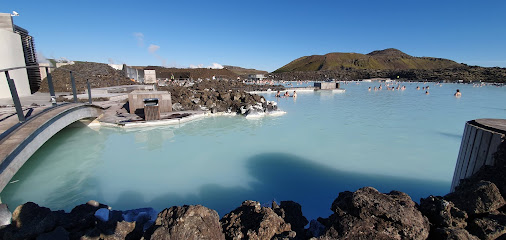
Kerid Crater
Experience the breathtaking beauty of Kerid Crater, a stunning volcanic gem in Iceland featuring vibrant colors and serene landscapes.
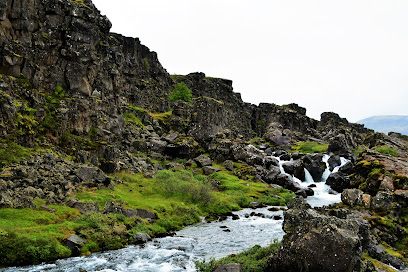
Perlan
Discover the wonders of Iceland's natural history at Perlan, a unique museum featuring glaciers, volcanoes, and breathtaking views in Reykjavik.
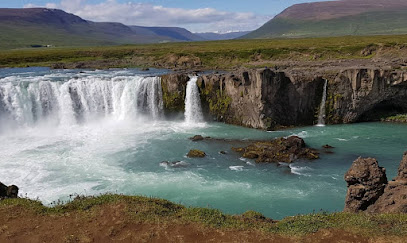
Sun Voyager
Experience the enchanting Sun Voyager in Reykjavik, a stunning sculpture symbolizing discovery and hope with breathtaking views of Iceland's landscapes.
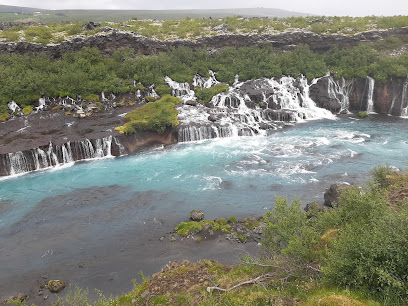
The Icelandic Phallological Museum (Hið Íslenzka Reðasafn)
Discover the quirky charm of the Icelandic Phallological Museum, an unusual yet educational attraction in Reykjavik that showcases a unique collection of phallic specimens.
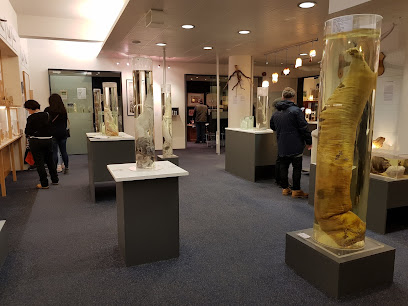
Reykjadalur Hot Spring Thermal River
Experience relaxation in the stunning Reykjadalur Hot Spring Thermal River surrounded by Iceland's breathtaking landscapes.
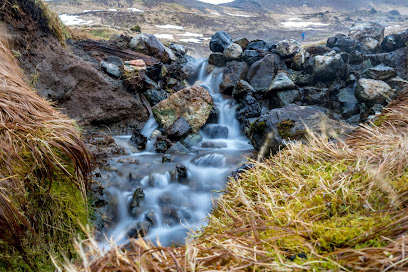
Bridge Between Continents
Discover the Bridge Between Continents in Hafnir, Iceland—where two tectonic plates meet and nature's beauty unfolds.
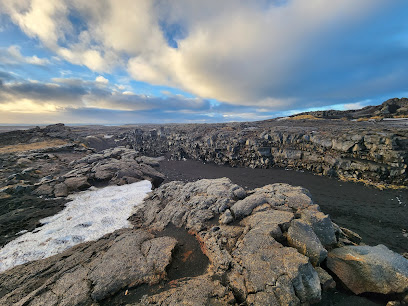
Raufarhólshellir
Discover the stunning beauty of Raufarhólshellir, a captivating lava tunnel in Iceland, offering a unique adventure through geological wonders.
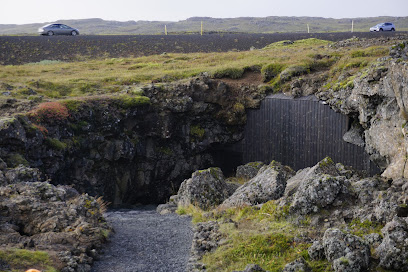
Krýsuvík
Experience the breathtaking geothermal wonders of Krýsuvík, a must-see destination showcasing Iceland's extraordinary natural beauty.

Whales of Iceland
Explore the wonders of marine life at Whales of Iceland, a captivating natural history museum showcasing life-sized whale models and interactive exhibits.
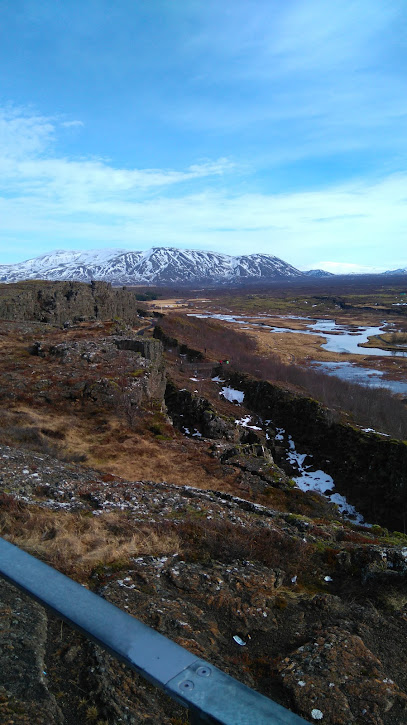
Gunnuhver Hot Springs
Discover the stunning Gunnuhver Hot Springs, a geothermal marvel in Iceland featuring vibrant mud pools and steam vents, perfect for nature lovers and photographers.
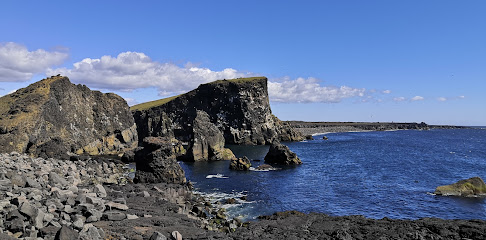
Reykjanesfólkvangur
Explore Reykjanesfólkvangur, a stunning nature preserve near Hafnarfjörður, showcasing Iceland's unique geothermal landscapes and vibrant wildlife.
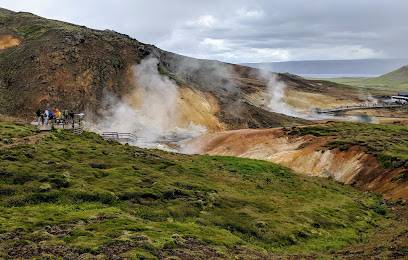
Valahnúkamöl
Discover the stunning coastal beauty of Valahnúkamöl, a breathtaking destination on Iceland's southern shores, perfect for nature lovers and photographers.
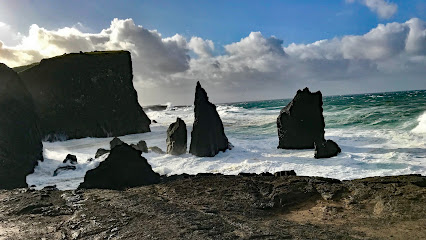
Viking World
Explore Viking World in Njarðvik, Iceland, where maritime history comes alive through captivating exhibits and authentic Viking ship replicas.
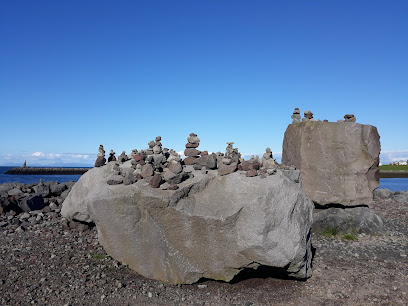
Garður Old Lighthouse
Experience the breathtaking views and rich history at Garður Old Lighthouse, a must-visit landmark on the Reykjanes Peninsula in Iceland.
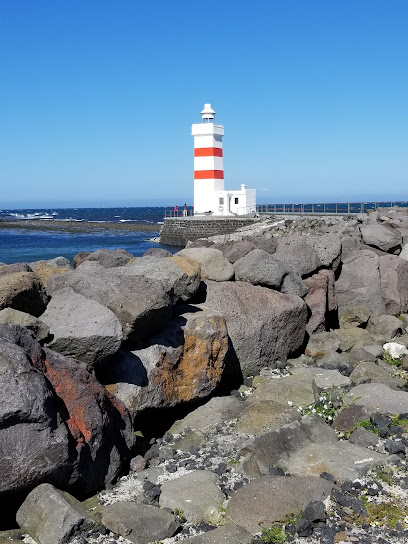
Unmissable attractions to see
Stafnesviti
Experience the breathtaking beauty and rich maritime history at Stafnesviti Lighthouse on the Reykjanes Peninsula.
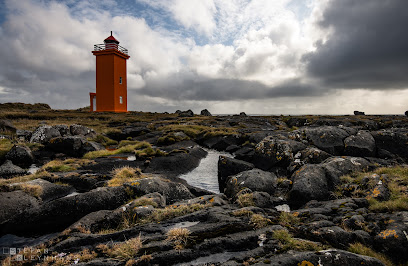
Sandvík
Explore the serene beauty of Sandvík, Iceland's tranquil nature preserve, perfect for relaxation and outdoor adventures amidst stunning landscapes.

Hafnarberg - Sea-cliffs
Explore the stunning Hafnarberg Sea-cliffs, a natural wonder of dramatic landscapes, diverse wildlife, and breathtaking ocean views in Iceland.
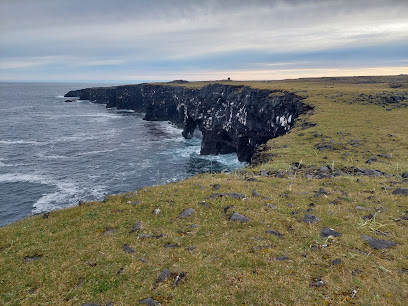
Duus Museum
Discover the maritime heritage of Iceland at the Duus Museum in Keflavík, a charming destination for history and culture enthusiasts.
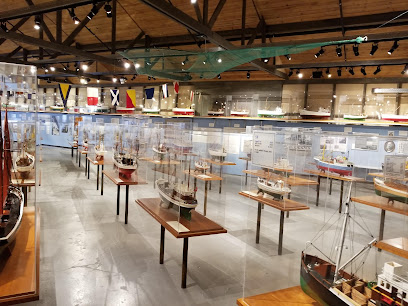
Þotuhreiðrið
Explore the enchanting Þotuhreiðrið sculpture in Keflavík, a stunning blend of art and nature that transforms from day to night.
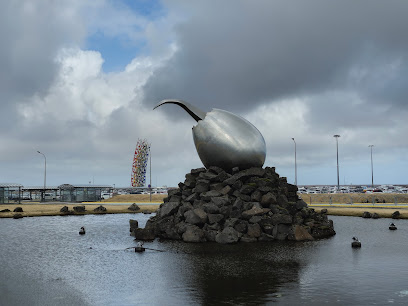
Lambafellsgjá
Explore Lambafellsgjá, a breathtaking Icelandic gorge where nature's beauty unfolds in stunning landscapes and rich biodiversity.

Listasafn Reykjanesbæjar
Explore contemporary Icelandic art at Listasafn Reykjanesbæjar, a vibrant museum nestled in Keflavík, perfect for art lovers and curious travelers alike.
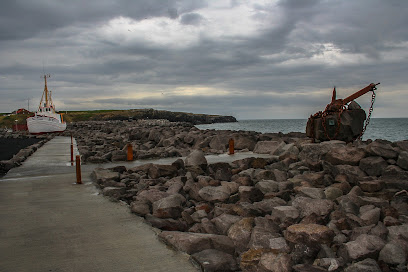
Kambur
Discover Kambur, a stunning tourist attraction in Njarðvík, where breathtaking landscapes and rich culture await every visitor.
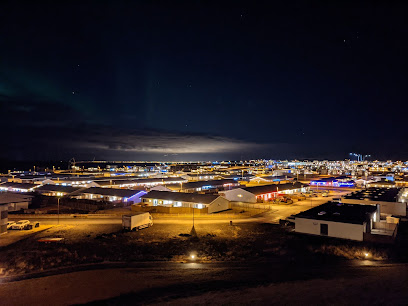
Steinhellur
Explore Steinhellur in Keflavík, a stunning tourist attraction revealing Iceland's rich natural beauty and cultural heritage, perfect for every traveler.
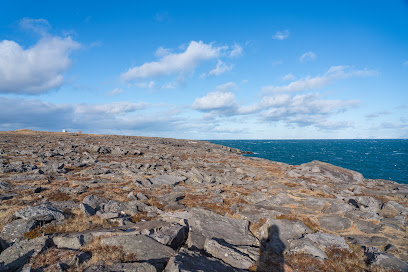
Uppspretta
Experience the serene beauty of Uppspretta, a hidden gem in Keflavík, Iceland, perfect for nature lovers seeking tranquility and stunning landscapes.
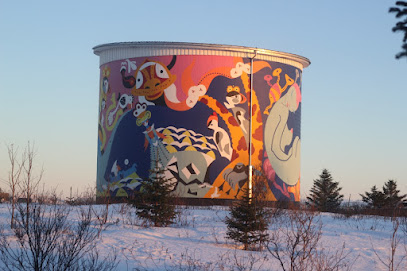
Carved Rock
Explore the stunning geological wonder of Carved Rock in Garður, a mesmerizing attraction that showcases Iceland's natural beauty and rich history.

Háleyjarbunga
Explore the breathtaking Háleyjarbunga, a stunning volcanic formation near Reykjavík, offering incredible views and a rich natural experience.
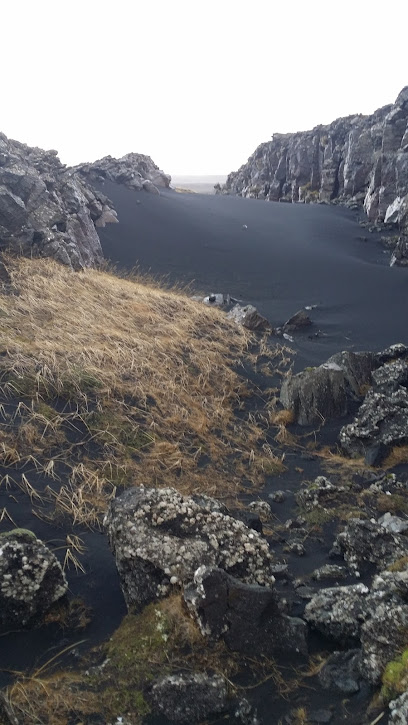
Children's Garden of Art
Discover the enchanting Children's Garden of Art in Njarðvík, where creativity blossoms and young artists thrive in a beautiful outdoor setting.
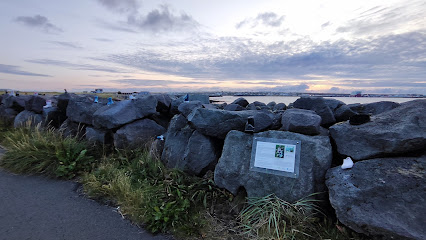
Hagafell
Explore Hagafell, a stunning natural attraction in Grindavik, Iceland, offering breathtaking views and unforgettable outdoor experiences.

Saturnus (Sólkerfið á Reykjanesi)
Discover the enchanting beauty of Saturnus in Reykjanes, a must-visit tourist attraction showcasing Iceland's stunning geological wonders.
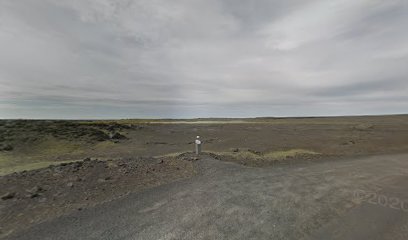
Essential places to dine
Café Bryggjan
Experience authentic Icelandic cuisine at Café Bryggjan in Grindavík, where fresh seafood meets stunning ocean views.
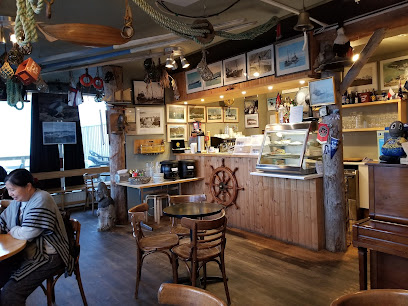
Lava Restaurant
Experience fine dining at Lava Restaurant in Grindavik - where Icelandic flavors meet breathtaking volcanic landscapes.
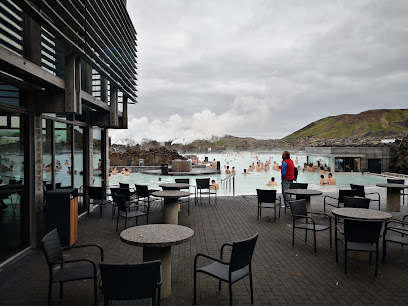
Kaffi Duus
Experience authentic Icelandic cuisine at Kaffi Duus in Keflavík - where tradition meets warm hospitality.

Olsen Olsen
Experience hearty Icelandic cuisine at Olsen Olsen in Keflavík – where delicious meals meet warm hospitality.
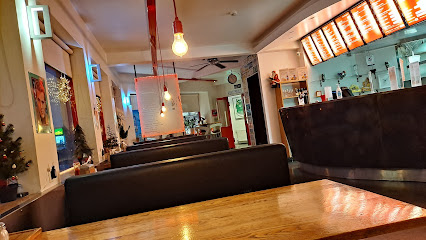
Nord
Discover the essence of Icelandic cuisine at Nord - where fresh seafood meets traditional flavors in a cozy setting.
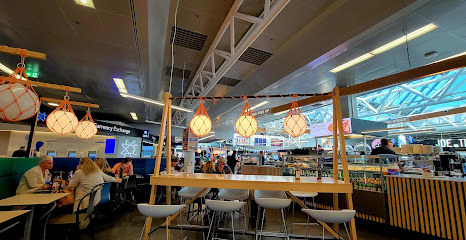
Röstin Restaurant - The Old Lighthouse café
Experience authentic Icelandic flavors at Röstin Restaurant by the Old Lighthouse, where stunning views meet delicious local cuisine.
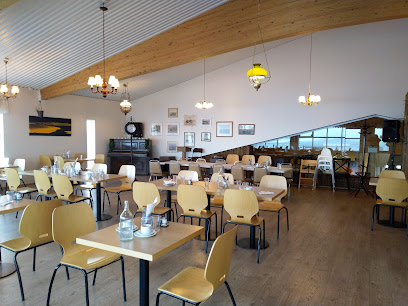
Salthúsið
Discover authentic Icelandic flavors at Salthúsið in Grindavik – a culinary haven for tourists seeking local delicacies.
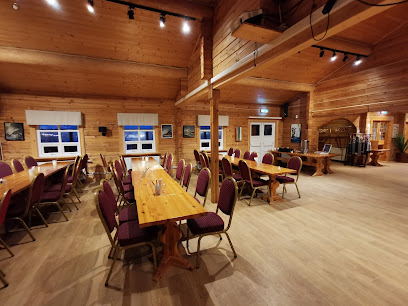
Oriento
Experience the best Mediterranean cuisine at Oriento in Keflavík - where flavor meets warmth.

hjá höllu
Discover fresh and flavorful Scandinavian cuisine at Hjá Höllu in Grindavík – where health meets taste in every dish.
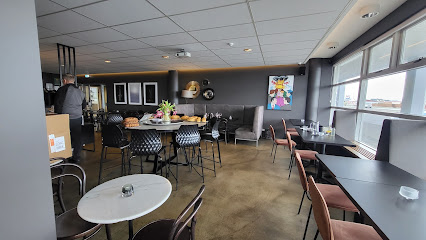
KFC
Experience the iconic flavors of KFC in Njarðvík – where crispy fried chicken meets Icelandic charm.
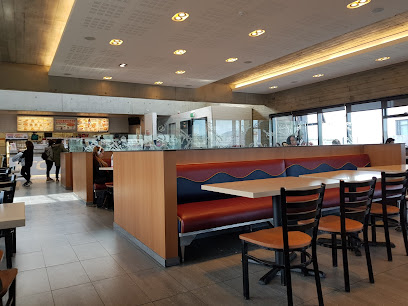
LiBRARY bistro/bar
Experience Icelandic flavors at LiBRARY Bistro/Bar—where culinary excellence meets cozy ambiance in Keflavík.
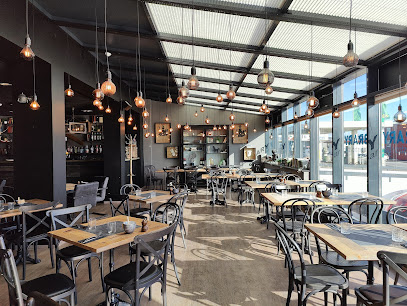
Veitingastaðurinn Ráin
Savor authentic Icelandic dishes at Veitingastaðurinn Ráin in Keflavík - where tradition meets flavor in a cozy setting.
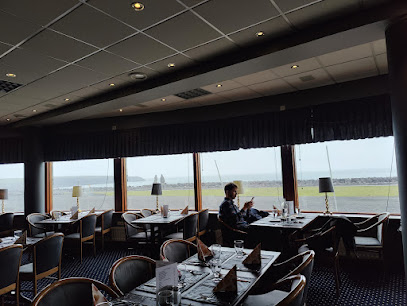
Thai Keflavik
Savor authentic Thai cuisine at Thai Keflavik – where Iceland meets Thailand in an unforgettable culinary adventure.
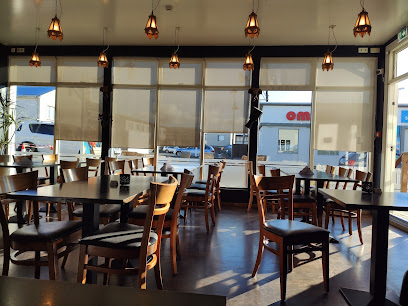
Subway
Discover delicious custom sandwiches at Subway in Keflavík - your go-to spot for quick meals while exploring Iceland's beauty.
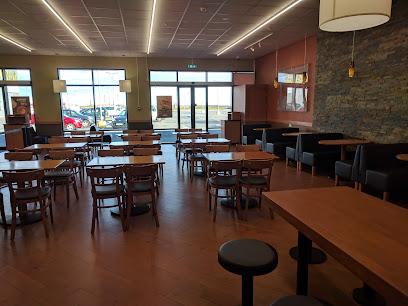
Kef Restaurant
Discover Kef Restaurant in Keflavík - where traditional Icelandic flavors meet modern culinary artistry.
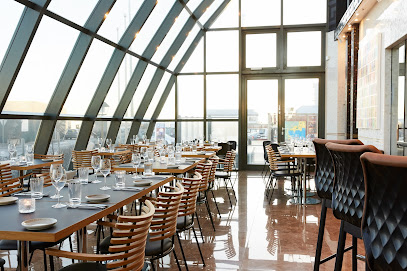
Markets, malls and hidden boutiques
Duty Free
Discover Icelandic treasures and global brands at Keflavík Duty Free, your ultimate shopping destination before flying.

GeoSilica Iceland
Explore GeoSilica Iceland: a unique gift shop in Keflavík offering Icelandic souvenirs and health products that celebrate local wellness traditions.
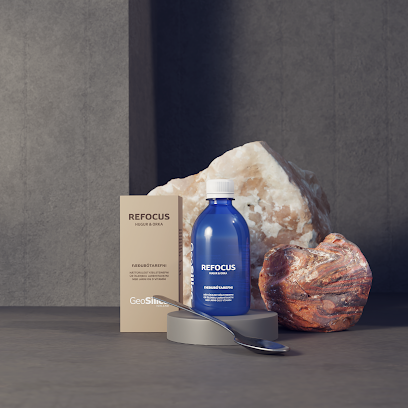
Stapafell
Explore the unique offerings of Stapafell Gift Shop in Keflavík, where local craftsmanship meets unforgettable souvenirs.
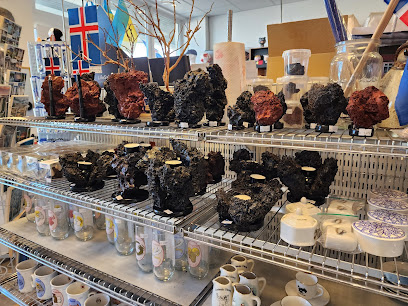
Rammagerdin Iceland Giftstore
Explore Rammagerdin Iceland Giftstore for unique souvenirs and home goods that embody the beauty and culture of Iceland.
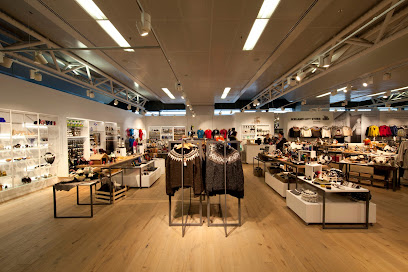
Urta Islandica - Sea and salt workshop
Explore the best of Icelandic gourmet cuisine at Urta Islandica, where sea and salt combine for an unforgettable culinary adventure.
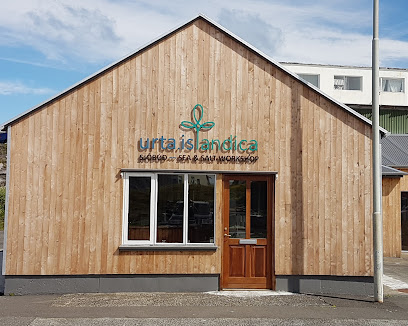
Skartsmidjan
Discover Skartsmidjan in Keflavík, Iceland – your ultimate destination for crafting supplies, yarn, and creative inspiration.
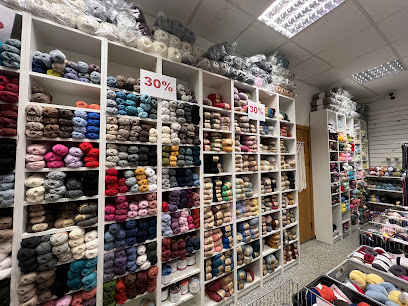
Víkurbásar
Discover unique vintage clothing at Víkurbásar, Keflavík’s premier used clothing store offering sustainable fashion treasures.
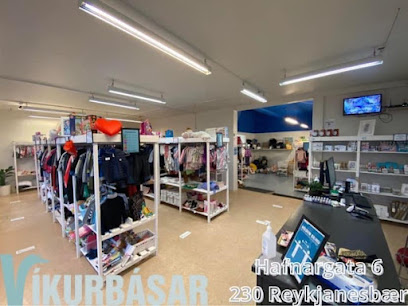
66°North
Explore Iceland in comfort and style with high-quality outerwear from 66°North, available at Keflavík International Airport.
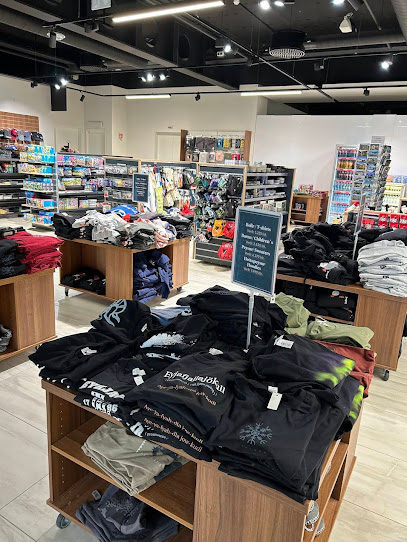
Skýjaborgir Vape Shop
Discover Skýjaborgir Vape Shop in Keflavík, Iceland—your ultimate destination for top-quality vaping products and expert advice.
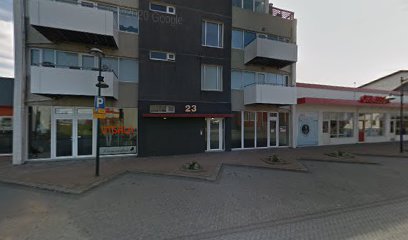
Draumaland
Explore Draumaland: Your gateway to authentic Icelandic gifts and local artisan treasures in Keflavík.
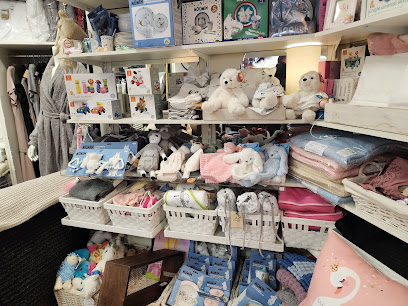
Handverk Duus
Discover the charm of Icelandic craftsmanship at Handverk Duus gift shop in Keflavík, where unique handmade treasures await.

Mónína verslun
Explore Mónína Verslun in Keflavík for high-quality baby products and a unique shopping experience tailored for families and tourists alike.
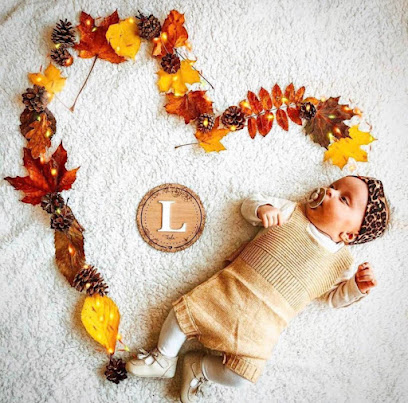
Verma
Discover Verma in Keflavík, where Icelandic culture and creativity come together in unique gifts and souvenirs for every traveler.
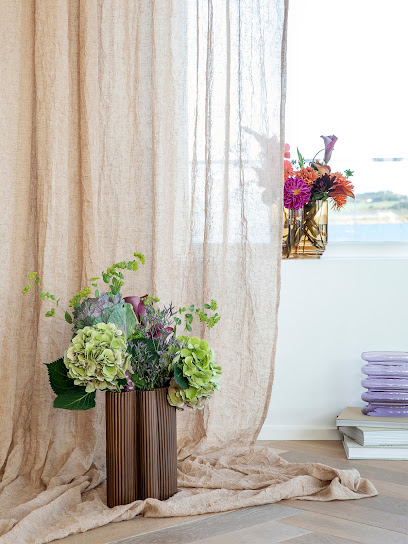
Blue Lagoon Store
Explore the Blue Lagoon Store for premium Icelandic cosmetics and skincare inspired by the natural beauty of geothermal waters.
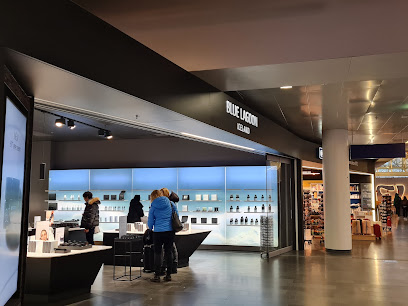
Álnabær
Explore Álnabær in Keflavík for authentic Icelandic home goods and unique souvenirs reflecting the island's rich culture and craftsmanship.
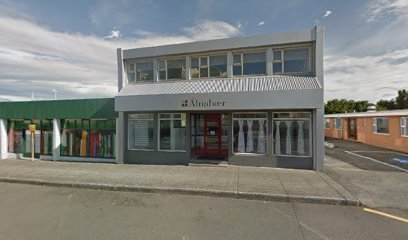
Essential bars & hidden hideouts
Papas' Restaurant
Experience the vibrant flavors of Iceland at Papas' Restaurant, a family-friendly dining destination in Grindavik, serving fish and chips, burgers, and more.
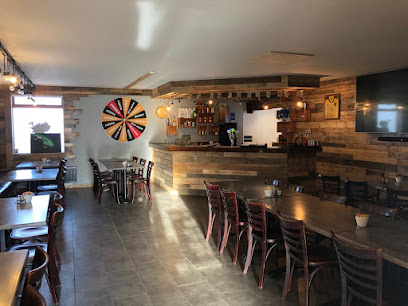
Kaffi Duus
Discover the flavors of Iceland at Kaffi Duus, a beloved restaurant in Keflavík, serving fresh seafood and traditional dishes with stunning harbor views.
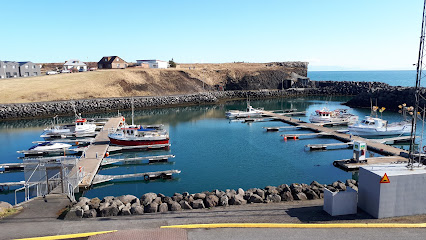
Fish House | Bar & Grill
Discover the flavors of Iceland at Fish House, a cozy grill and bar in Grindavik, where fresh seafood meets local hospitality.
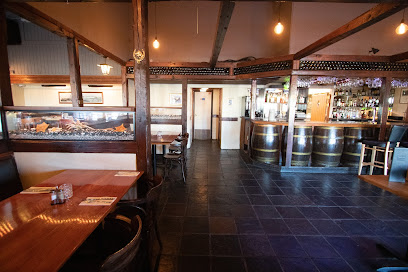
Cafe Petite
Discover Cafe Petite in Keflavík: A cozy bar and coffee shop perfect for relaxation and socializing with a local twist.
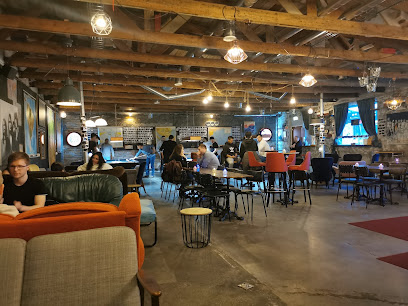
LiBRARY bistro/bar
Experience the vibrant flavors of Iceland at LiBRARY Bistro/Bar, where delicious cuisine meets a cozy pub atmosphere in Keflavík.
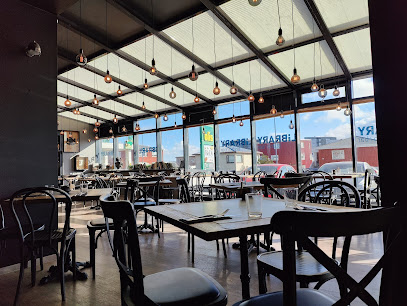
Veitingastaðurinn Ráin
Discover the flavors of Iceland at Veitingastaðurinn Ráin, a culinary haven in Keflavík, offering fresh seafood and local dishes in a cozy setting.
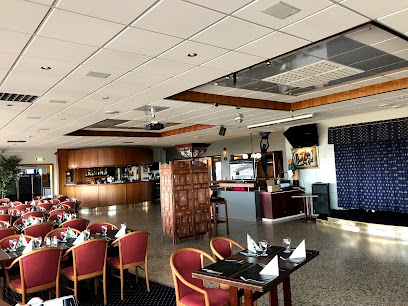
Kef Restaurant
Discover the essence of Icelandic cuisine at Kef Restaurant, where fresh ingredients meet exquisite flavors in a charming coastal setting.

Pulsuvagninn
Discover the authentic taste of Iceland at Pulsuvagninn, Keflavík's beloved hot dog stand offering delicious bites at unbeatable prices.
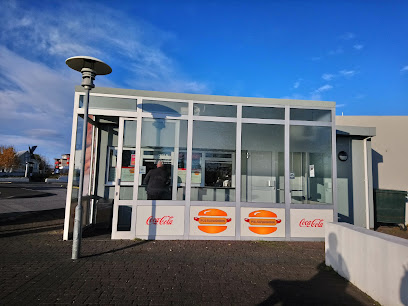
Kína Panda
Experience the vibrant flavors of authentic Chinese cuisine at Kína Panda in Keflavík, where delicious dishes and warm hospitality await every visitor.
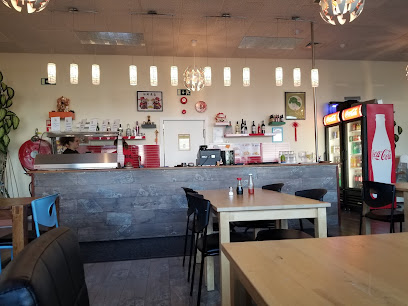
Paddy's Beach Pub
Discover the vibrant atmosphere of Paddy's Beach Pub in Keflavík, where sports, food, and fun come together in an unforgettable experience.

Loksins Café & Bar
Discover Loksins Café & Bar at Keflavík International Airport, where Icelandic hospitality meets luxurious comfort in a stylish setting.
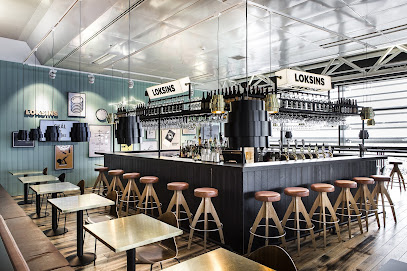
Take Off Bistro
Discover the culinary delights of Take Off Bistro in Keflavík, where fresh, local ingredients meet Icelandic tradition.
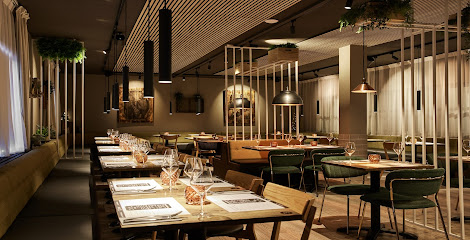
The Icelandic Rockbar
Experience the vibrant nightlife at The Icelandic Rockbar, where unique cocktails and live music await you in Hafnarfjörður.
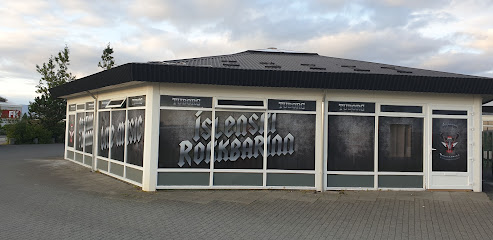
Public Deli
Experience the best of Icelandic cuisine and local products at Public Deli, a culinary haven in Reykjanesbær.
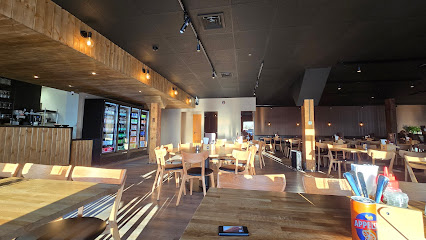
Sjómannastofan Vör
Experience the essence of Icelandic culture through its flavors at Sjómannastofan Vör in Grindavik, a culinary gem for every traveler.

Local Phrases about Reykjanes Peninsula
-
- HelloHalló
[HAH-loh] - GoodbyeBless
[bless] - YesJá
[yah] - NoNei
[nay] - Please/You're welcomeGjörðu svo vel
[GYOR-thu SVO vel] - Thank youTakk
[tahk] - Excuse me/SorryAfsakið
[AHF-sa-kith] - How are you?Hvað segir þú?
[kvath SEY-ir thoo] - Fine. And you?Í lagi. Og þú?
[ee LAH-ghi. ohg thoo] - Do you speak English?Talar þú ensku?
[TAH-lar thoo ENS-koo] - I don't understandÉg skil ekki
[yehg skil EHK-ki]
- HelloHalló
-
- I'd like to see the menu, pleaseÉg ætla að sjá matseðilinn, takk
[yehg EHT-la ath syah MAT-se-thil-inn, tahk] - I don't eat meatÉg borða ekki kjöt
[yehg BOR-tha EHK-ki chyut] - Cheers!Skál!
[skowl] - I would like to pay, pleaseÉg ætla að greiða, takk
[yehg EHT-la ath gray-tha, tahk]
- I'd like to see the menu, pleaseÉg ætla að sjá matseðilinn, takk
-
- Help!Hjálp!
[HYOWLP] - Go away!Farðu burt!
[FAR-thu burt] - Call the Police!Hringdu í lögregluna!
[HRING-thu ee LOH-gre-gluna] - Call a doctor!Hringdu í lækninn!
[HRING-thu ee lighkt-ninn] - I'm lostÉg er týndur
[yehg air TEEN-thur] - I'm illÉg er veikur
[yehg air VAY-kur]
- Help!Hjálp!
-
- I'd like to buy...Ég ætla að kaupa...
[yehg EHT-la ath KOW-pa] - I'm just lookingÉg er bara að skoða
[yehg air BAH-ra ath STHOH-tha] - How much is it?Hvað kostar það?
[kvath KOS-tar thah] - That's too expensiveÞað er of dýrt
[thath air ohf DEER-t] - Can you lower the price?Getur þú lækkað verðið?
[GEH-tur thoo LAHY-kath VER-thith]
- I'd like to buy...Ég ætla að kaupa...
-
- What time is it?Hvað er klukkan?
[kvath air KLOO-kahn] - It's one o'clockKlukkan er eitt
[KLOO-kahn air ayht] - Half past (10)Hálf tíu
[howlf tee-oo] - MorningMorgunn
[MOHR-gun] - AfternoonSíðdegis
[SEETH-degh-is] - EveningKvöld
[kvuhlt] - YesterdayÍ gær
[ee gigh-ayr] - TodayÍ dag
[ee dahg] - TomorrowÁ morgun
[ow MOHR-gun] - 1Einn
[aythn] - 2Tveir
[tveh-yir] - 3Þrír
[threer] - 4Fjórir
[fyoh-reer] - 5Fimm
[fihm] - 6Sex
[sehx] - 7Sjö
[syoh] - 8Átta
[owt-tah] - 9Níu
[nee-uh] - 10Tíu
[tee-oo]
- What time is it?Hvað er klukkan?
-
- Where's a/the...?Hvar er...
[kvar air] - What's the address?Hvað er heimilisfangið?
[kvath air HAY-mil-is-fahn-yith] - Can you show me (on the map)?Getur þú sýnt mér (á kortinu)?
[GEH-tur thoo seent meer (ow KOR-tinu)] - When's the next (bus)?Hvenær kemur næsti (strætisvagn)?
[kveh-nayr KEH-mur NY-stih (straht-is-vahn)] - A ticket (to ....)Miða (til ....)
[MEE-thah (til)]
- Where's a/the...?Hvar er...
History of Reykjanes Peninsula
-
The Reykjanes Peninsula is a geological wonder, formed by the Mid-Atlantic Ridge where the Eurasian and North American tectonic plates meet. This unique positioning has resulted in constant volcanic activity, creating a landscape of lava fields, geothermal areas, and rugged coastlines. The peninsula's volcanic history dates back millions of years, with the most recent eruptions occurring in the 13th century and as recently as 2021.
-
The first settlers arrived in Iceland in the late 9th century, and the Reykjanes Peninsula was among the first areas to be inhabited. These Norse settlers brought with them their culture, traditions, and farming practices. Archaeological sites on the peninsula, such as the remnants of Viking longhouses, provide a glimpse into the lives of these early inhabitants. The Seltjarnarnes area, in particular, is noted for its rich history from this period.
-
The town of Grindavík, located on the southern coast of the Reykjanes Peninsula, has a long and storied history as a fishing hub. Since the settlement era, the town has been a center for fishing and fish processing. The harbor, which has been in use for centuries, continues to play a crucial role in the town's economy. The Grindavík Maritime Museum offers insights into the town's fishing heritage and maritime history.
-
The Blue Lagoon, one of Iceland's most famous attractions, is located on the Reykjanes Peninsula. It was formed in 1976 as a result of the operations of the nearby Svartsengi geothermal power plant. The lagoon's warm, mineral-rich waters are acclaimed for their therapeutic properties, and it has become a symbol of Iceland's innovative use of geothermal energy. The Blue Lagoon attracts visitors from all over the world, contributing significantly to the local tourism industry.
-
Reykjanesviti, Iceland's oldest lighthouse, stands on the southwestern tip of the peninsula. Built in 1907, it has guided countless vessels safely to shore over the years. The lighthouse replaced an earlier structure that was destroyed by an earthquake in 1887. Reykjanesviti is a testament to Iceland's maritime history and the importance of navigation aids in the often treacherous waters around the peninsula.
-
The Viking World Museum, located in the town of Njarðvík, offers a deep dive into the Viking history of the Reykjanes Peninsula and Iceland as a whole. The museum's centerpiece is the Íslendingur, a replica of a 9th-century Viking ship that sailed to North America in 2000. Exhibits cover various aspects of Viking life, including their voyages, settlements, and cultural practices, making it a must-visit for history enthusiasts.
-
Keflavík, once a quiet fishing village, has transformed into a bustling town due to its proximity to the Keflavík International Airport. During World War II, the United States established a military base in Keflavík, significantly impacting the local economy and infrastructure. The airport, originally built for military purposes, now serves as Iceland's main international gateway, connecting the country to the rest of the world.
-
The Bridge Between Continents is a symbolic footbridge located on the Reykjanes Peninsula, spanning a fissure between the Eurasian and North American tectonic plates. This unique geological feature allows visitors to walk between two continents, experiencing firsthand the dynamic forces shaping the earth's crust. The bridge serves as a powerful reminder of the peninsula's geological significance and the ever-shifting nature of our planet.
-
The Svartsengi Geothermal Power Plant, operational since 1976, is a pioneering facility in the use of geothermal energy. Located near the Blue Lagoon, the plant harnesses the geothermal resources of the Reykjanes Peninsula to produce electricity and hot water. Its innovative approach has set a benchmark for sustainable energy practices in Iceland and around the world. The plant's visitor center provides educational tours, highlighting the importance of renewable energy.
Reykjanes Peninsula Essentials
-
The Reykjanes Peninsula is located in southwest Iceland, and the main entry point is Keflavík International Airport (KEF), which is the largest airport in Iceland. The airport is well-connected with various international destinations. From the airport, you can take a taxi, rent a car, or use the Flybus service to reach your destination on the peninsula. Reykjavik, the capital city, is approximately 50 kilometers away and can be reached in about 45 minutes by car or bus.
-
On the Reykjanes Peninsula, renting a car is the most convenient way to explore the area at your own pace. Car rental services are available at Keflavík International Airport and in Reykjavik. Public buses operated by Strætó connect key locations on the peninsula, but schedules can be infrequent. Taxis are also available but can be expensive. Biking is an option for short distances, and some areas are accessible on foot.
-
The official currency in Iceland is the Icelandic Króna (ISK). Credit and debit cards are widely accepted, even for small transactions, and ATMs are available in most towns. It is advisable to carry some cash for smaller establishments or rural areas. Tipping is not customary in Iceland, as service charges are typically included in bills.
-
The Reykjanes Peninsula is generally a safe destination for tourists, with very low crime rates. However, it's always wise to use common sense and take standard precautions. Avoid leaving valuables in plain sight in vehicles and be cautious in crowded areas. There are no specific neighborhoods with high crime rates targeting tourists, but it is always best to stay vigilant and aware of your surroundings.
-
In case of an emergency, dial 112 for immediate assistance, which covers police, fire, and medical services. The local police station and medical facilities are available in Keflavík and other major towns on the peninsula. It's highly recommended to have travel insurance that covers medical emergencies. Pharmacies are available in towns for minor health issues and over-the-counter medications.
-
Fashion: Do dress in layers and be prepared for sudden changes in weather. Waterproof and windproof clothing is highly recommended. Avoid wearing high heels or uncomfortable shoes, as the terrain can be rugged. Religion: Do respect local customs and traditions. When visiting churches, dress modestly and behave respectfully. Public Transport: Do be respectful and considerate of others. Wait for passengers to disembark before boarding. Don't eat or drink on public transport. Greetings: Do greet people with a friendly 'hello' or 'hæ'. Icelanders appreciate politeness and a smile. Eating & Drinking: Do try local delicacies like skyr, lamb, and seafood. Don't refuse offers of food or drink as it may be considered impolite.
-
To experience Reykjanes Peninsula like a local, consider visiting the Blue Lagoon, a geothermal spa that is a favorite among residents. Explore lesser-known sights like the Gunnuhver hot springs and the Reykjanesviti lighthouse for a more authentic experience. Engage with locals, who are often friendly and willing to share tips about hidden gems. Don't miss out on the opportunity to see the Northern Lights during the winter months, and participate in local festivals and events for a deeper cultural experience.
Trending Landmarks in Reykjanes Peninsula
Nearby Cities to Reykjanes Peninsula
-
Things To Do in Keflavik
-
Things To Do in Hafnarfjordur
-
Things To Do in Kopavogur
-
Things To Do in Reykjavik
-
Things To Do in Hveragerdi
-
Things To Do in Selfoss
-
Things To Do in Borgarnes
-
Things To Do in Olafsvik
-
Things To Do in Stykkisholmur
-
Things To Do in Vik
-
Things To Do in Blonduos
-
Things To Do in Isafjordur
-
Things To Do in Saudarkrokur
-
Things To Do in Akureyri
-
Things To Do in Dalvik













